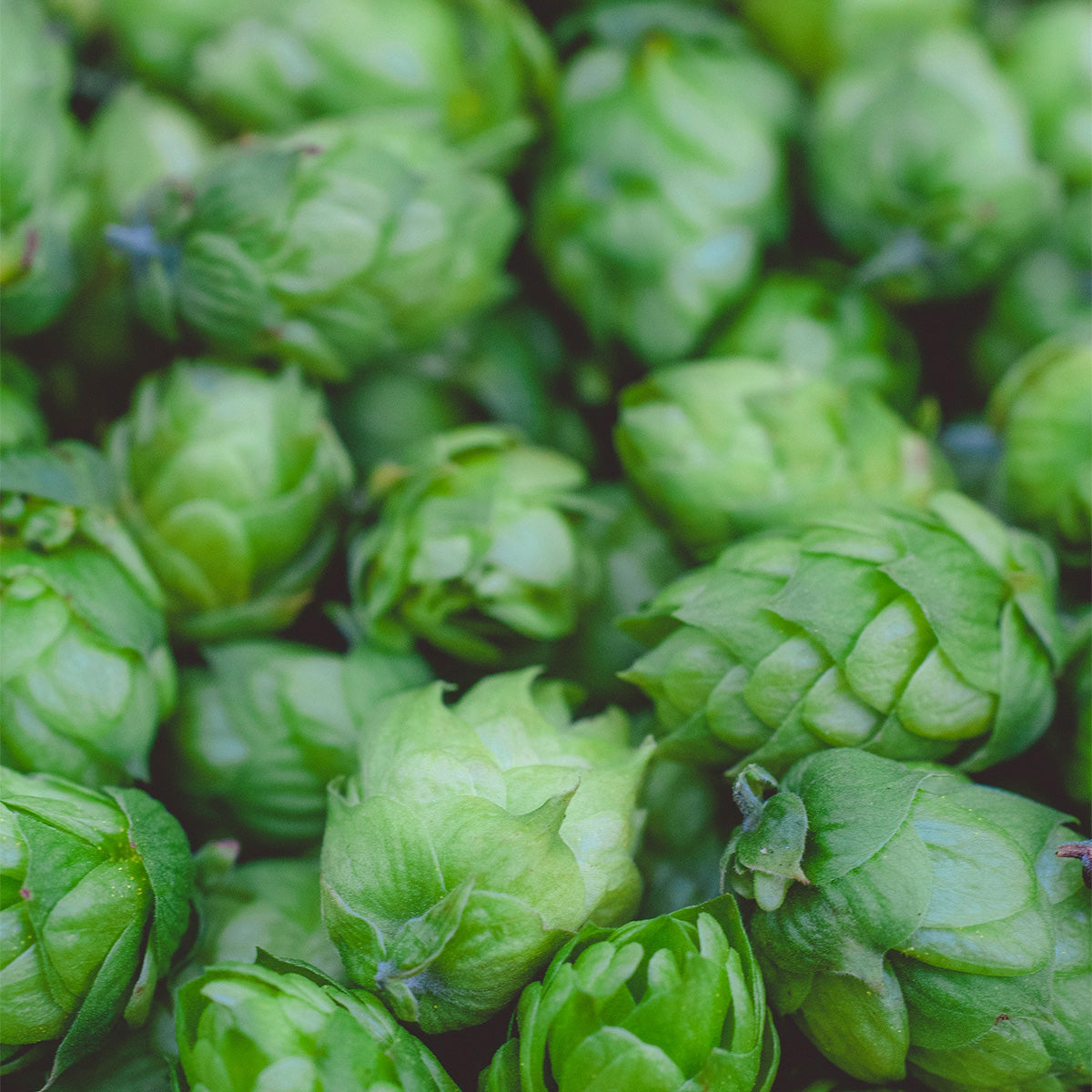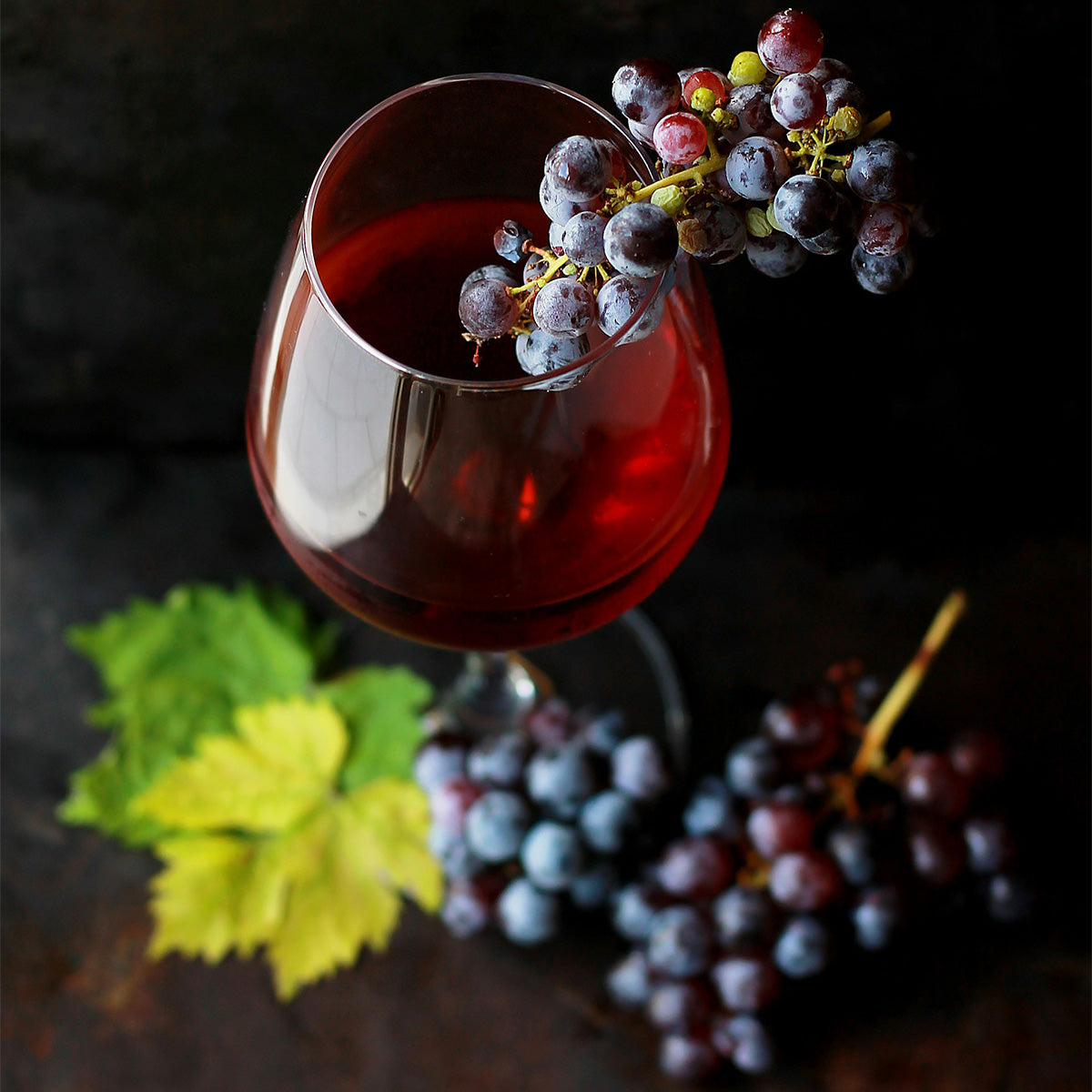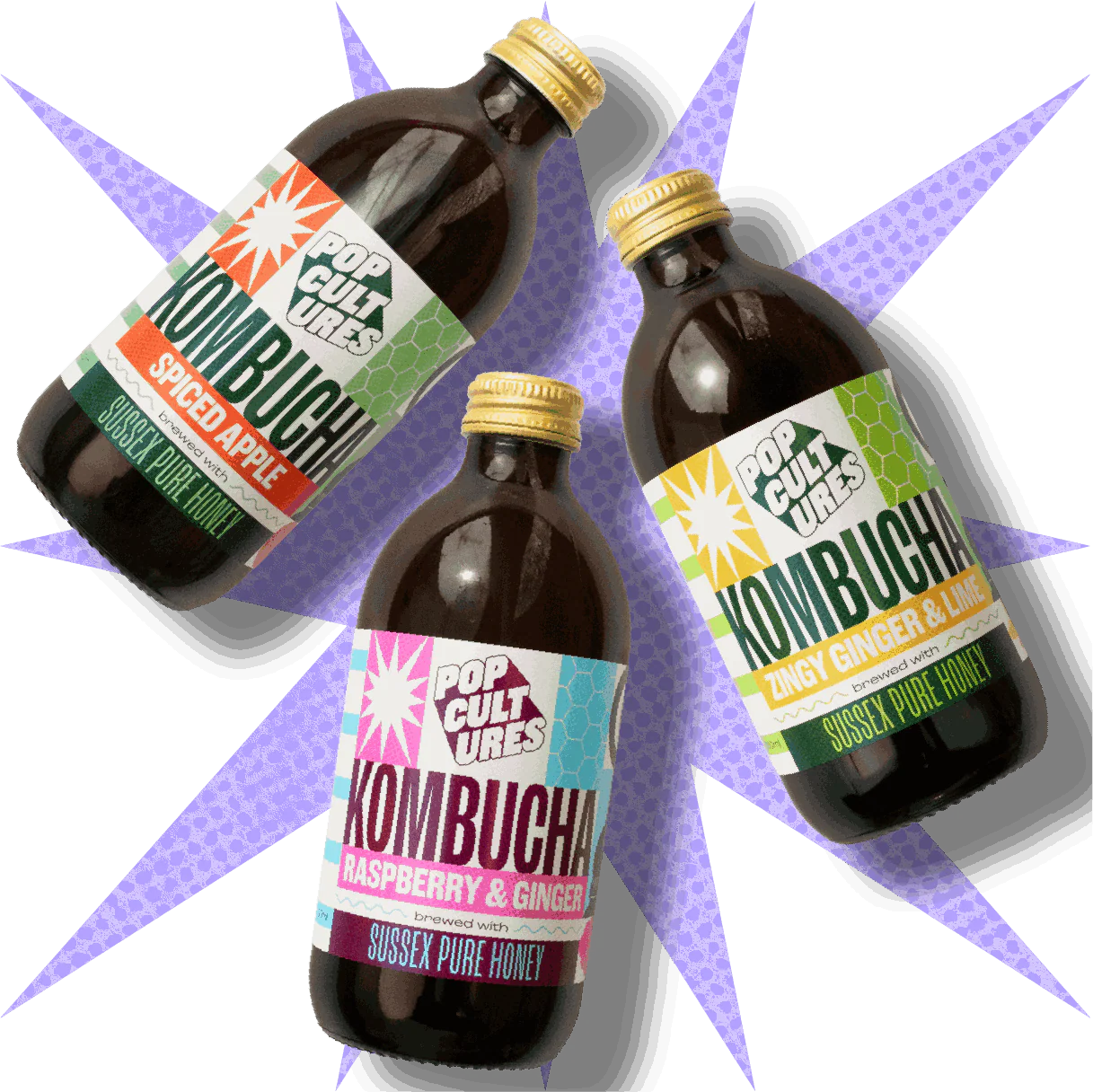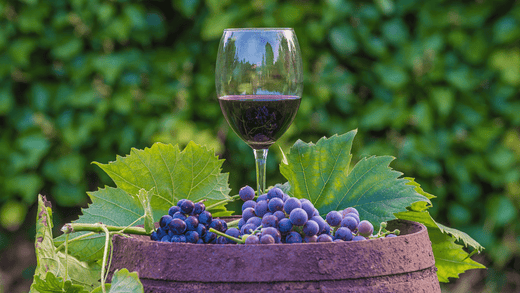Have you ever wondered how non-alcoholic wine is made? And how alcohol-free wine is different from sparkling grape juice? In this blog, we will be outlining how non-alcoholic wine is made, along with the three main alcohol extraction processes.
You can expect to read a step-by-step process, as well as learn about how aromas can be removed and then reintroduced and about the importance of tannins. You will also learn about advancements in yeast strains and discover our top three non-alcoholic wines!
So, let’s get picking, crushing, pressing and pulping into the world of non-alcoholic wine.
What is Non-Alcoholic Wine?
Non-alcoholic wine, also known as alcohol-free or de-alcoholised wine, is a beverage that resembles traditional wine with significantly reduced or no alcohol content. It has a similar taste, texture and aroma to traditional wine as the production process involves fermentation, unlike sparkling grape juice; perfect for those who want to enjoy the experience of wine, without consuming alcohol.

How The Process for Making Non-Alcoholic Wine Starts
The process of making non-alcoholic wine starts in the same way as traditional wine; the desired grape variety is selected, and harvested at their optimal ripeness. Factors considered in these stages include acidity, sugar content and flavour development. Once the grapes are harvested, they are crushed to release their juice, pulp and skins and then pressed to separate the juice from the skins and seeds.
Clarification is then carried out to remove hazy particles and may involve the following:
- Settling: Allowing the wine to rest in tanks or barrels, enabling heavier particles to naturally settle to the bottom. This method is gentle but can be time-consuming.
- Fining: Adding substances (fining agents) that bind with the suspended particles, making them larger and easier to remove. Common fining agents include casein (milk protein), gelatin, egg whites, and isinglass (fish bladder protein). For vegan non-alcoholic wines, bentonite (a type of clay) and pea protein are used.
- Filtration: Passing the wine through filters to physically remove particles. Filtration can range from coarse, which removes larger particles, to fine and sterile filtration, which can remove yeast and bacteria.
- Centrifugation: Using a centrifuge to apply force, separating particles from the wine more quickly and efficiently than settling.
After harvesting, crushing, pressing and clarification, the non-alcoholic wine is then transferred to fermentation barrels in which yeast (either natural or added) begins to convert the sugars in the grape juice into alcohol and carbon dioxide. During this time, the temperature is controlled carefully to control the fermentation speed and influence the flavour profile. Are you a little confused by the phrase ‘convert the sugars’ into ‘alcohol?’
Let us explain the various ways in which the alcohol is then removed in alcohol-free wine the next step...

How Wine is Made Non-Alcoholic
You may be wondering, what is the point of de-alcoholised wine? Why add alcohol and then remove it?!
Well, fermentation not only produces alcohol - it produces a plethora of refined tastes, textures and aromas; essential to winning over a wine connoisseur's palette. However, to keep tastes, aromas, textures and tannins, precise alcohol removal methods are needed.
Here are the three main methods used to keep the poignant taste of traditional wine, whilst successfully removing the alcoholic content of non-alcoholic wine.
Vacuum Distillation
Vacuum distillation involves heating the wine under low pressure, which causes the alcohol to evaporate at a lower temperature than the other components of the wine. The alcohol vapour is then condensed and collected separately, leaving behind a non-alcoholic liquid. Vacuum distillation is effective at alcohol removal but can also strip away some of the flavours and aromas that make wine enjoyable.
Reverse Osmosis
Reverse osmosis involves passing the wine through a series of membranes that selectively separate the alcohol from the other components. This method allows for control over the level of alcohol removed and can retain more of the original flavours and aromas.
Spinning Cone Technology
Spinning cone technology utilises a spinning cone column that separates the alcohol from the wine through evaporation. The wine is introduced into the column and heated, causing the alcohol to vaporise and rise to the top, where it is collected separately. This method is known for preserving the delicate flavours of the wine while removing the alcohol.
Once alcohol removal has taken place, through one of the above processes, producers may choose to add a small amount of alcohol-like substances to mimic the mouthfeel and body of traditional wine. These substances can include glycerol or other extracts that give the non-alcoholic wine a similar texture to its alcoholic counterpart.
Does The Process Differ for Different Types of Non-Alcoholic Wine?
Yes, the process of de-alcoholisation can differ for different types of non-alcoholic wine, depending on various factors including the type of wine being produced e.g. red, white, rosé, prosecco and champagne. Differences in the production process may include:
- Grape skin maceration: Typically, in alcohol-free red wine, the grape skins are left in contact with the juice to extract colour, tannins and flavours (maceration). However, for white and rosé wines the skins are removed through pressing before fermentation.
- Vacuum distillation: Temperature and pressure settings may be adjusted differently to produce different flavours for different types of wine e.g. to produce delicate aromas for white wine, or deeper, more complex flavours for alcohol-free red wine.
- Reverse osmosis: The specific membranes and pressures used can vary.
- Spinning cone columns: this method can be fine-tuned to remove alcohol whilst capturing and then can later reintroduce aroma compounds (useful for aromatic white wines).
- Blending Compounds: Removed grape compounds may be blended back into non-alcoholic red wines to achieve the body and mouthfeel which are usually provided by alcohol and tannins in regular wine.
- Carbonation: This is an extra step that may be added to improve the sensory experience of prosecco and champagne.

Why Can Non-Alcoholic Wine Taste Different?
Non-alcoholic wine can taste different due to the various methods used to remove or reduce the alcohol content. These methods can affect the overall flavour profile of the wine. For example, vacuum distillation may result in a slightly different taste compared to spinning cone technology. Additionally, the choice of grape variety and the level of ripeness at harvest can also contribute to differences in taste. Despite these variations, non-alcoholic wine is crafted to closely resemble the taste of traditional wine, to the extent that many individuals cannot tell the difference, allowing them to enjoy the flavours without the alcohol.

Aroma is Removed
During the de-alcoholisation process, one important aspect to consider is the removal of aroma. Since alcohol plays a significant role in carrying and enhancing the aromas of wine, special techniques, such as reintroducing aromas through spinning cone columns, are used to preserve and reintroduce these aromatic compounds into non-alcoholic wine.
Good Tannins are Taken Away
The de-alcoholisation process can also result in the loss of tannins. Tannins contribute to the structure and mouthfeel of wine, providing a pleasant astringency. To compensate for this, winemakers may use techniques like oak aging or the addition of tannin extracts to enhance the texture and complexity of non-alcoholic wine.
Modern Improvements to Making Non-Alcoholic Wine
Modern improvements to making non-alcoholic wine have focused on developing more advanced de-alcoholisation techniques. For example, advancements in modified yeast strains have allowed for the production of non-alcoholic wines with more complex flavours and aromas. These yeast strains have been developed through gene modification techniques and adaptive evolution. However, in recent years, consumer behaviour has moved away from purchasing food and beverages using genetically modified organisms (GMO) so, adaptive selection and evolution are preferred techniques.
Other modern improvements include:
- Pervaporation: A relatively new technique that involves the selective permeation of alcohol through a membrane, offering the potential for high-quality preservation.
- Cross-flow Filtration: This technology improves clarity and stability while being more gentle on the wine, preserving more of the original flavours and aromas compared to traditional filtration methods.
- Electrodialysis: A technique that can adjust acidity without the need for chemical additives.
- Micro-oxygenation: Introducing oxygen in controlled amounts can mimic the ageing process, improving the sensory characteristics of non-alcoholic red wines.
- High-Pressure Processing (HPP): A non-thermal pasteurisation method that inactivates microbes without heating and preserves the sensory and nutritional quality of the wine.
- Active Packaging: Using packaging materials that interact with the non-alcoholic wine to extend shelf life, improve quality, or indicate freshness.
The Best Non-Alcoholic Wines to Try
McGuigan Zero Shiraz NV

A symphony of dark fruit flavours, coupled with chocolate, pepper and oak-aged tones. Sourced from premium vineyards in South Eastern Australia, McGuigan uses the latest spinning cone technology to create a luxurious alcohol-free wine that delivers in taste, depth and texture. Soak up the tones of blackberry and plum, and enjoy a smooth, satisfying finish with hints of vanilla and spice. A gluten-free and vegan-friendly alcohol-free red wine.
Ariel Chardonnay
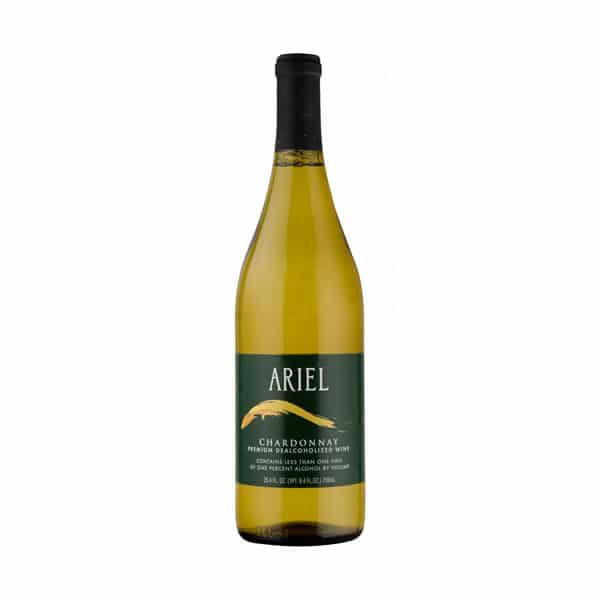
Ariel Chardonnay is a low-alcohol white wine (0.5%) that brings the rich tapestry of traditional Chardonnay flavours to the fore without the alcohol. This wine glimmers with a golden hue, offering a bouquet of green apples, peaches, and a hint of honey, with an oaken backdrop. Its palate is a blend of citrus and tropical fruits, enhanced by a creamy, buttery texture, culminating in a crisp and refreshing finish. A perfect choice for those seeking sophistication and enjoyment in a nearly alcohol-free option.
Spanish Torress Natureo Rosé

A delicate bouquet of wild red fruits, strawberries, raspberries and cherries, with hints of rose petals and a captivating pink blush. Light, lively and refreshing, this crisp rosé embodies a smooth, rounded finish that exudes a subtle sensuality, with a touch of minerality. Sip and savour this delightful alcohol-free wine amongst friends in the afternoon sun.
Concluding Thoughts - Understanding The Non-Alcoholic Wine Process
So, let’s recap. The process of making non-alcoholic wine is similar to making traditional wine, with an extra step - extraction. Alcohol can be extracted in one of three ways which include vacuum distillation, reverse osmosis and through spinning cone technology. The process of de-alcoholisation can differ for different types of wine and modern improvements are continuing to improve the taste, quality, texture and aromas of non-alcoholic wine.
So, what have you learnt about making alcohol-free wine? And which extraction process are you yet to taste? Comment below, we would love to hear your thoughts.
Here at Drydrinker, we have a range of non-alcoholic wines, made through various fermentation and extraction processes. Are you looking for a rich, fruity and full-embodied red wine? Or perhaps a glass of bubbly? If you’re buying for a friend and are spoilt for choice, you can check out our Just For You Wine Gift Boxes which include three premium, non-alcoholic wines.
Follow us @drydrinker to keep updated with the latest winemaking and non-alcoholic trends.

